Finding Motivation After 40: Unlock Secrets to Lifelong Passion!
- Finding Motivation After 40: Unlock Secrets to Lifelong Passion!
- Midlife Challenges
- Understanding Your True Motivators
- Tools for Self-Discovery and Motivation after 40
- Sleep: The Unsung Hero of Motivation after 40
- Physical and Mental Health: A Dual Approach to Motivation after 40
- Building Habits: The Foundation of Sustainable Motivation after 40
- Finding Your Sources of Motivation after 40
- Top Tips For Building Habits After 40
- Short-Term Extrinsic Motivators: Quick Fixes for Motivation after 40
As you reach your 40s, it’s common to face challenges that may impact your levels of self-motivation. Whether it’s due to career changes, personal growth, or shifting priorities, finding motivation after 40 is essential for maintaining balance and achieving success in this stage of life. Thankfully, this post will talk you through various proven strategies that can help you rediscover and nurture your motivation. Let’s dive in.
Midlife Challenges
Midlife is a time of significant transitions. Many of us are at the peak of our careers, facing the challenge of securing our achievements and managing shifting priorities as we plan for future stages of life. Juggling multiple responsibilities can make us question whether we have the luxury to pause and contemplate what truly matters. The notion of focusing on ourselves might feel alien, even selfish. And the creeping fear that it’s too late for change can be intimidating. But it’s important to recognize these feelings for what they are – just fears, not facts.
Understanding Your True Motivators
Furthermore, by the time men hit their 40s, career objectives tend to monopolize the motivation landscape. While valuable, this focus on work-related goals can sometimes eclipse other facets of life that are equally, if not more, significant.
In truth, finding motivation after 40 goes beyond the professional sphere. It requires deeper introspection to understand your core drivers across all domains of life. Perhaps, now is the opportune moment to hit the ‘pause’ button, recalibrate your focus, and introspectively delve into your true motivators.
What sparks your joy?
Ask yourself, what sparks joy and excitement in you beyond work? It could be anything – from spending quality time with family and friends, indulging in a cherished hobby, contributing to a cause you feel strongly about, or even focusing on personal health and fitness.
It’s about creating a balanced symphony of goals that resonate with your personal values and broader life vision. By understanding your unique motivators, you’ll be better positioned to propel yourself forward professionally and in every sphere of your life.
Tools for Self-Discovery and Motivation after 40

So, what’s needed to navigate this stage productively? Here’s a toolkit:
- Routines: Establish consistent daily habits. Routines can be comforting and efficient, freeing up mental space for motivation and creativity.
- Accountability: Whether it’s a friend, a colleague, or a professional coach, having someone to hold you accountable can keep you focused and driven.
- Capture Emotions: Journaling is a powerful tool for self-reflection. If it feels like a chore, find an alternative. You could try voice recording your thoughts or using a digital app to note your feelings and ideas.
- Learning: Embrace the concept of lifelong learning. Dive into new topics of interest and explore unfamiliar territories. Learning can fuel your motivation and broaden your perspectives.
- Coaching Exercises to Understand Core Values: Coaching exercises can facilitate understanding your core values. They can help align your goals with what truly matters to you, providing a consistent source of motivation. An example exercise is shown below:
Future Self Exercise
Visualize yourself in the future, say five or ten years from now. In your vision, where are you, what are you doing, who are you with, how are you feeling, and what is important to you? This vision of your future self can provide clues about what values are most important to you.
Sleep: The Unsung Hero of Motivation after 40
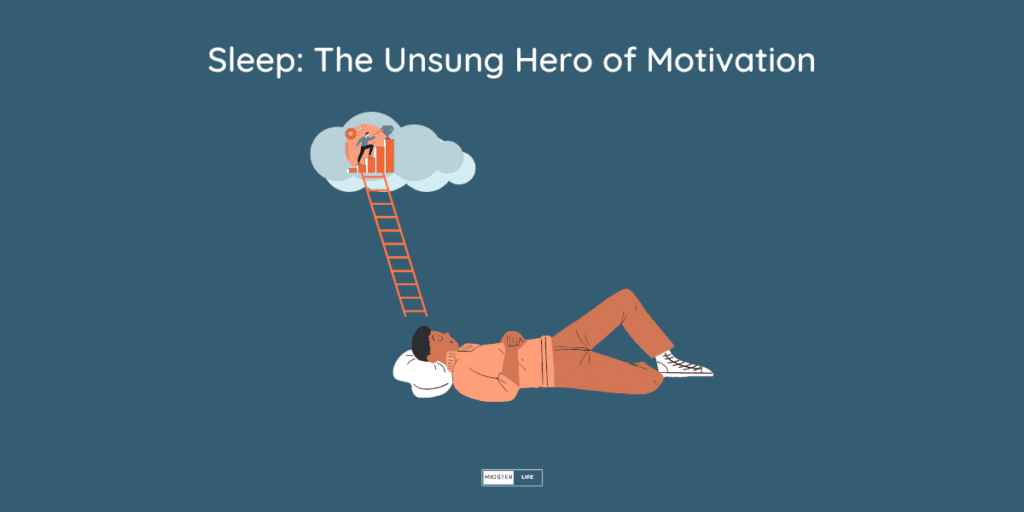
Sleep is an essential yet often overlooked component of our motivation, focus, and stress management. Bad quality sleep or insufficient sleep can sap your motivation, reduce your ability to focus and lead to heightened stress levels.
Furthermore, studies have shown that a lack of sleep can also impact your mindfulness, memory, and overall cognitive ability, making it harder for you to engage in tasks effectively or think creatively.
So, how can we improve the quality and quantity of our sleep?
Top Tips for Better Sleep
- Embrace Deep Darkness: Ensure your sleeping environment is as dark as possible. Light can interfere with your body’s production of melatonin, a hormone that regulates sleep. Consider using blackout curtains or a sleep mask to achieve deep darkness.
- Avoid Adrenaline and Stressful Exercise in the Evening: Engaging in adrenaline-boosting activities or intense workouts close to bedtime can make it harder to unwind and fall asleep. Try to schedule these activities for earlier in the day.
- Deep Sleep for an Anxious Brain: Deep sleep “rewires” the anxious brain, reducing anxiety levels. Maintaining a consistent sleep schedule, limiting caffeine and alcohol, and creating a relaxing pre-sleep routine can help promote deeper sleep.
- Limit Screen time to at least an hour before bed. Device Screens emit blue light, suppressing melatonin production in the brain, making it difficult for people to turn off their brains and fall asleep.
Physical and Mental Health: A Dual Approach to Motivation after 40

Understanding how your physical and mental health interconnects and how this can affect your motivation and overall well-being is essential. There are several short and long-term benefits of prioritizing these aspects.
Short-term Benefits
In the short term, engaging in physical activities releases endorphins, the feel-good hormones. This release can motivate you and make you feel happier, more energized, and better equipped to take on the day’s challenges.
Long-term Benefits
Over the long term, regular physical activity and mental health practices can yield substantial health benefits. Some potential benefits are improved cardiovascular health, a more robust immune system, better weight management, and fewer chronic health issues. These physical improvements often lead to enhanced mental well-being, providing an additional source of motivation.
Stress can contribute to weight gain and other health issues, especially from work. While it might seem that incorporating regular exercise into your busy schedule is a challenge, consider it a long-term investment in your future. Regular exercise can mitigate the effects of stress, keeping you healthier and more resilient in the face of life’s challenges.
Therefore, investing in your physical and mental health isn’t just a matter of living healthier; it’s about boosting your motivation, improving your performance, and enhancing your overall quality of life.
Building Habits: The Foundation of Sustainable Motivation after 40
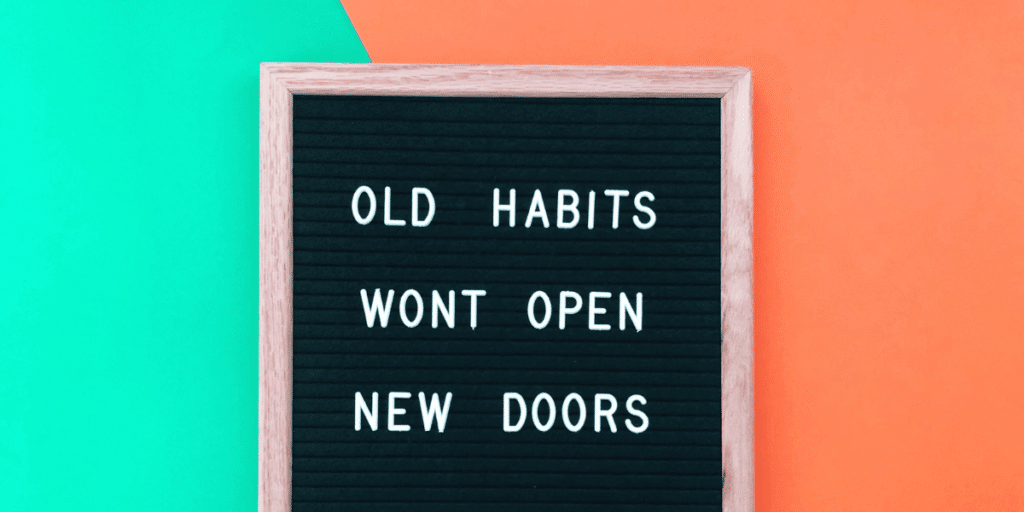
Building habits is a critical component of sustained motivation. Utilizing cognitive biases and understanding how habits form can provide valuable tools in this journey.
Leveraging the Zeigarnik Effect
The foundation of sustained motivation lies in the habit-building process. By understanding processes like the Zeigarnik effect, you can harness the power of habit.
This psychological phenomenon indicates that people remember incomplete tasks better than completed ones. As such, it can be a powerful tool in motivation, pushing you to continue tasks once started. Starting a task occupies a place in your memory, and the brain creates a nagging feeling to complete it, essentially saying, “I need to get back to that task.” Recognizing and utilizing this effect can be the first step toward building successful and motivating habits.
Consistency
The timeline for developing a new habit varies from person to person. A European Journal of Social Psychology study found that it can take anywhere from 18 to 254 days, with an average of 66 days, for a new behavior to become automatic. The key to this process is consistency.
Creating Time Blocks for New Habits
In light of this, it’s important to block out specific times for your interests and new habits to ensure consistency. This dedicated time serves as a commitment to yourself, signaling the importance of these activities in your life.
Regular Exercise
Furthermore, regular exercise is a beneficial habit that contributes to physical health, mental well-being, and overall motivation. It provides an immediate rush of endorphins and long-term health benefits, making it a powerful component of a motivated lifestyle.
Building in Wind-Down Time
Equally, avoiding burnout is as essential as maintaining motivation. To achieve this, ensure you build in wind-down time. This period allows you to relax, rejuvenate, and step away from the demands of daily tasks. It’s an act of self-care and an essential practice for maintaining sustained motivation and productivity.
Finding Your Sources of Motivation after 40
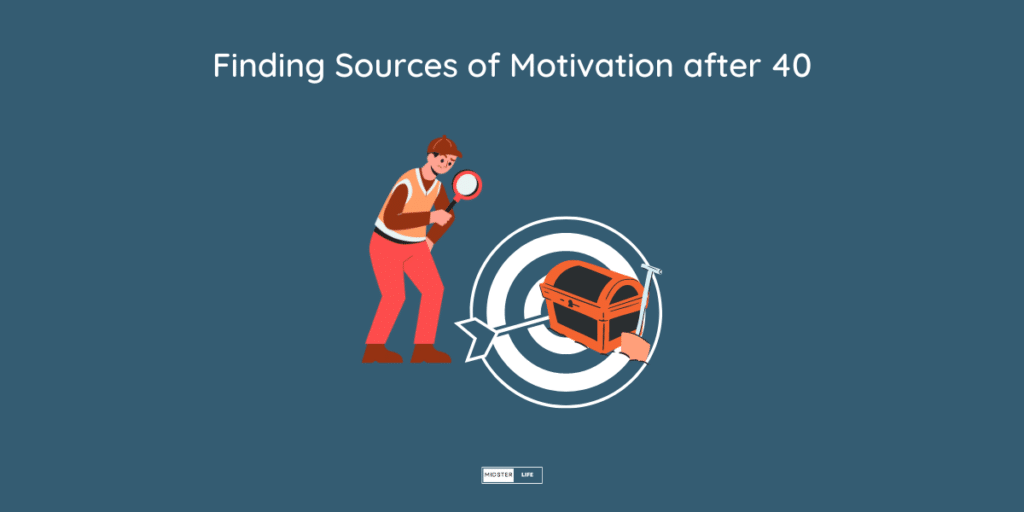
Uncovering your unique sources of motivation can enhance your productivity and satisfaction. Here are some key areas you can explore:
Helping Others
Look for opportunities where you’ve overcome struggles. These experiences can often serve as sources of inspiration and motivation, primarily when you use them to assist others who are a few steps behind. Helping others provides a sense of purpose and satisfaction and can remind you of your strengths and achievements.
Optimize Your Environment and Routines
In addition, an optimized workspace and minimal distractions can significantly enhance your productivity and motivation. A comfortable workspace that suits your needs can make getting into a focused mindset easier, paving the way for efficient and effective work.
Creating To-Do Lists
Likewise, a well-structured to-do list can be a powerful tool for maintaining motivation. You can gain a clear sense of direction and progress by breaking down your tasks and visualizing your work.
Moreover, a balanced to-do list that includes work-related tasks and personal or leisure activities can serve as a form of self-care, promoting a more sustainable and satisfying workflow. Checking off completed tasks provides a sense of accomplishment and can help build momentum.
Additionally, it can trigger a release of dopamine, a neurotransmitter associated with feelings of pleasure and satisfaction, further reinforcing the enjoyment of productivity. Therefore, creating a thoughtful to-do list can enhance your motivation and contribute to your overall well-being.
Balancing the Familiar and the New
We often gravitate towards tasks or activities we are familiar with and good at because success in these areas triggers the release of endorphins, making us feel good. However, this comfort can sometimes prevent us from stepping out of our comfort zones and trying new things.
While new skills or tasks may be challenging at first, leading to struggles and self-doubt, they also offer opportunities for growth. Overcoming these initial hurdles and expanding your talents can increase satisfaction and motivation.
Top Tips For Building Habits After 40
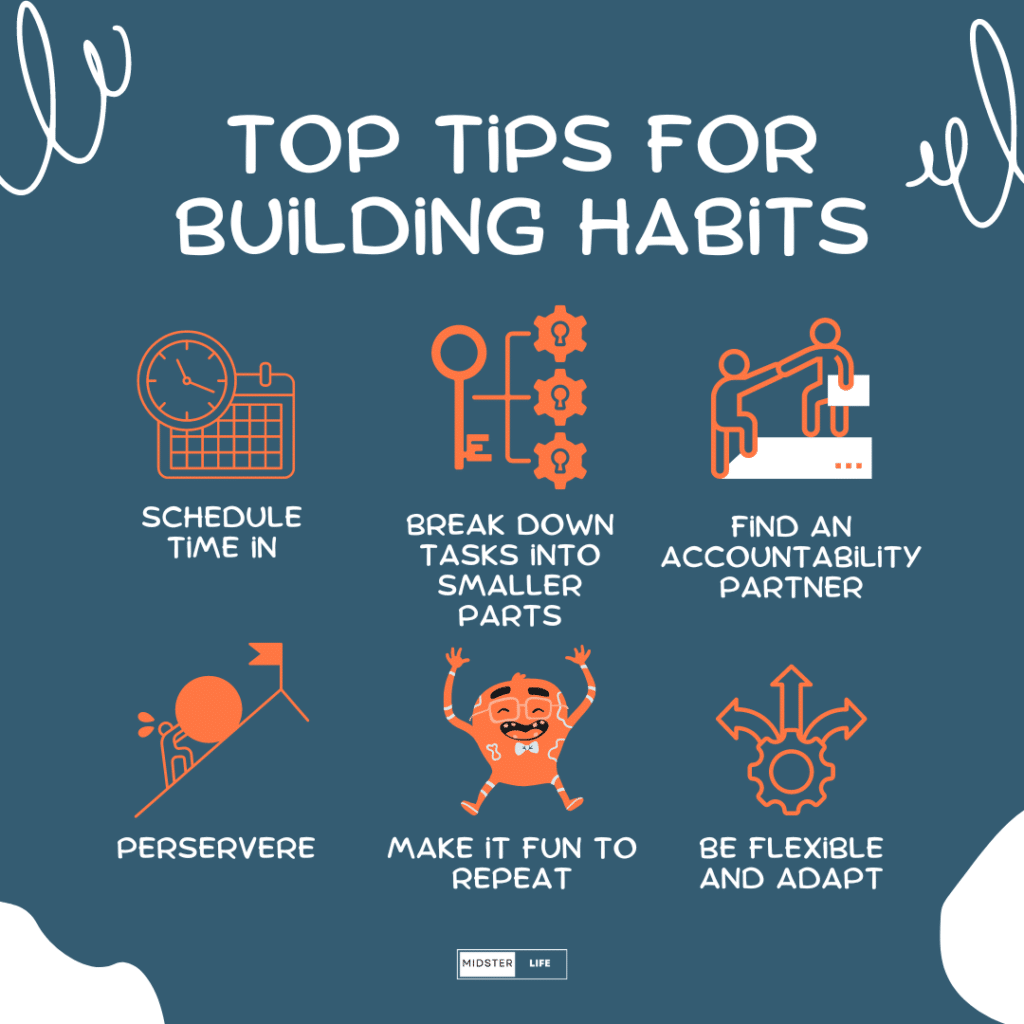
To help you navigate this journey, here are some tips:
- Schedule tasks into your calendar: This keeps you organized and visually represents your commitments.
- Break down tasks into smaller, manageable parts: It’s important just to get startedThis makes getting started and maintaining momentum easier.
- Find a coach, accountability partner, or networking group: External support can provide motivation, insight, and accountability.
- Push yourself early in the process: The initial stages of a new task or skill can be the hardest. Persevere through this stage; as you improve, it will become more natural and enjoyable.
- Make it Fun to repeat – By putting in place a reward for sticking to your new habit, you will want to repeat it often. Just ensure the reward is healthy and aligned with the goal and habit you are trying to embed.
- Be flexible and adapt: Life can often get in the way of even the best intentions, so ensure you regularly review your goals and desired new habits. Allow yourself to be flexible. You need to ensure new habits are challenging but not too difficult that you fail.
Short-Term Extrinsic Motivators: Quick Fixes for Motivation after 40
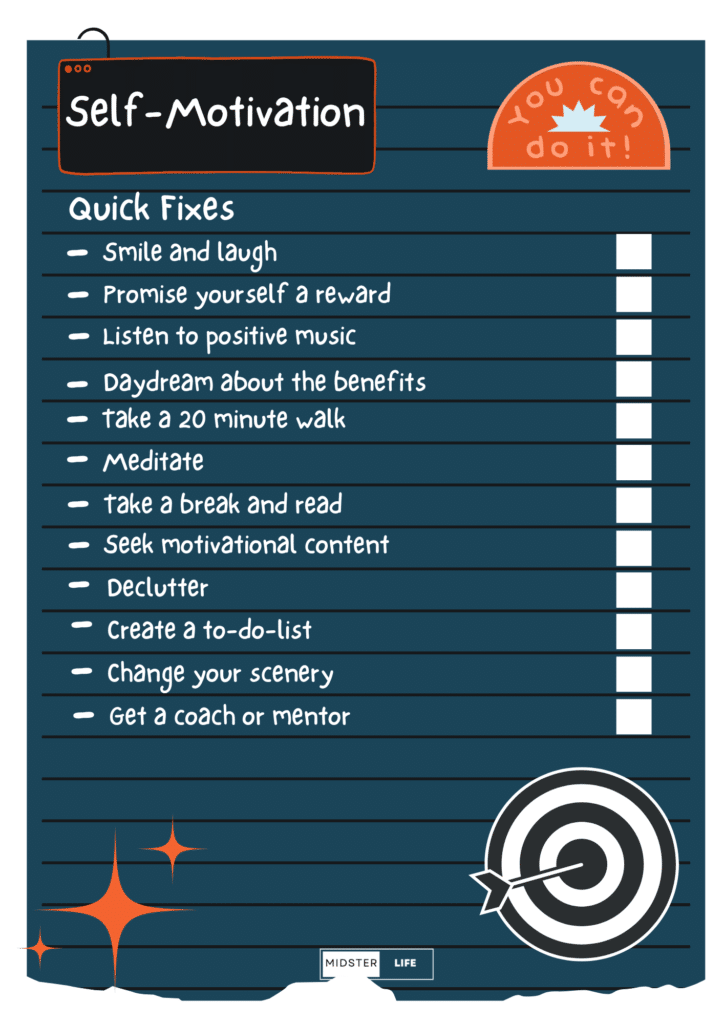
At times, we all need a quick pick-me-up to boost our motivation. Here are several effective short-term extrinsic motivators that can help spark that initial drive or reignite your motivation when you’re feeling low:
- Smile and Laugh: Watching something funny can improve your mood and get you in a more positive headspace.
- Promise Yourself a Reward: Self-reward is a powerful incentive. Whether it’s a treat, an episode of your favorite show, or a short break, rewarding yourself after completing a task can motivate you.
- Listen to Energetic or Positive Music: Music can influence moods and energy levels. A playlist with uplifting or energizing songs can boost your spirits and motivation.
- Daydream About the Benefits: Visualization can be a strong motivator. Imagine yourself reaping the benefits of your work to help inspire action.
- Take a 20-Minute Walk: A short walk can stimulate the release of endorphins, boosting your mood and motivation.
- Meditate: Short meditation sessions can help clear your mind, reduce stress, and increase focus, helping to boost motivation.
- Take a Break: Sometimes, the best way to regain motivation is to step away from the task. This can help you return with renewed energy and perspective.
- Seek Motivational Content: Listen to motivational speeches, read biographies of inspiring people, or watch uplifting content.
- Declutter: A clean and organized workspace can improve focus and productivity, enhancing motivation.
- Create a To-Do List: Outlining your tasks can provide a clear path forward, and the satisfaction of ticking off completed tasks can boost motivation.
- Change Your Scenery: A change in your environment can often lead to a shift in perspective and motivation.
- Get a Coach: A professional coach can provide valuable insights, accountability, and motivation.
Lastly, it’s essential to stay adaptable and flexible in your approach. Adjust your goals or strategy as you progress. If things aren’t going according to plan, reassess your situation and make necessary changes, ensuring they align with your original motivations. By staying flexible and aligned with your core motivations, you’ll be able to navigate challenges without losing sight of your overall objectives.
In conclusion, maintaining motivation after 40 isn’t just about achieving success at work or ticking items off your to-do list. It’s about nurturing a sense of purpose, aligning your goals with your core values, investing in your physical and mental health, building sustainable habits, and finding joy in both the familiar and the new.
It’s about understanding that while the challenges of midlife are real, so are the opportunities for growth, resilience, and meaningful achievement. With the right tools, strategies, and mindset, you can boost your motivation and enhance your overall quality of life. Remember, it’s never too late to start this journey, and the immediate and long-term rewards are well worth the effort.
Discover how brain chemicals and goal setting can get you motivated after 40 in this post!


